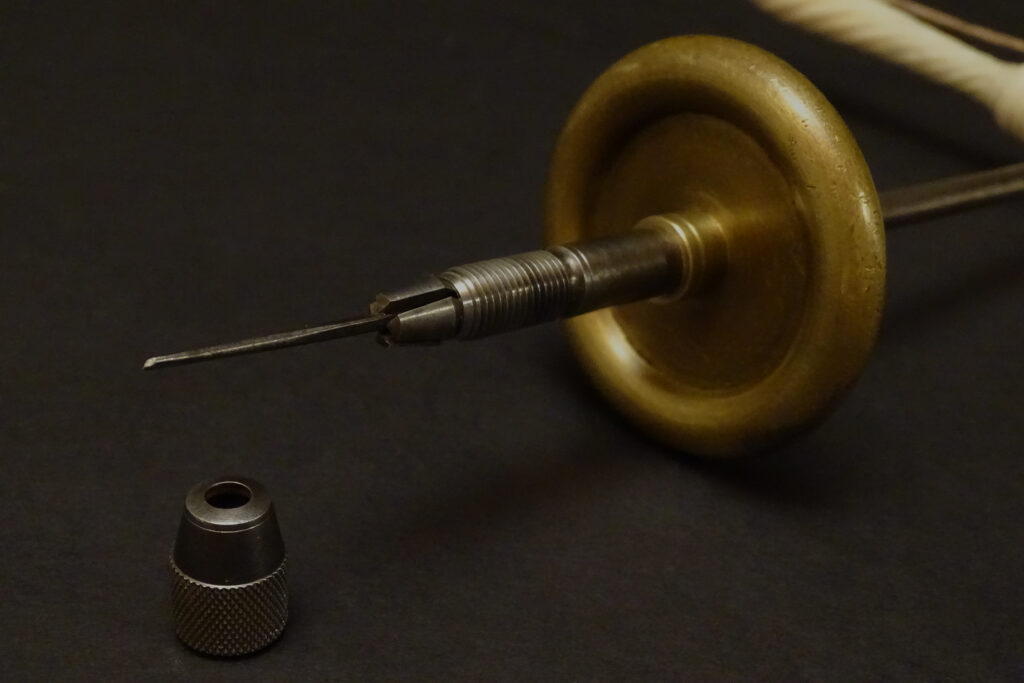
The pump drill is an ancient tool that was used by the Aboriginal peoples to start fires by friction and to drill holes in materials such as wood, shell, bone and stone. Usually they are very basic tools using elementary materials to construct them.
The pump drill consisted of a crossbeam with a center hole, through which a shaft is run. Cords are tied to the top of the shaft and to the two ends of the crossbeam. Also, a flywheel made from wood, stone or a metal such as brass is attached to the bottom of the shaft. When the crossbeam was pushed down, the shaft rotated, helped along by the cords. At the bottom of the downward motion, the flywheel provides enough inertia to rewind the cord and to keep the shaft spinning continuously, first in one direction, then in the other. As an engineer, I love the fact that the pump drill is an excellent example of a reciprocal motion that is transferred into a circular motion.

One of the advantages of using a pump drill over a bow drill, brace, or other type of boring tool is that a skillful user can operate a pump drill with one hand, while using the other to position and steady the work piece.
Because of the semicircular motion that is constantly changing directions, the best bit to use for drilling needs to cut in both a clockwise and counterclockwise direction. Modern twist drill bits only cut in one direction so a flat bit with a center point is best for use with a pump drill which can cut in both directions.
Small pump drills were manufactured and regularly used until the early 20th century primarily by metalworkers—silversmiths, jewelers, and clock- and watch-makers—to bore small holes in homogeneous materials like brass, precious metals, and stone.
I have a couple very basic examples of pump drills in my collection but when I found this example, I was fascinated with how a primitive device was transformed into such an elegant tool by using a highly decorative piece of carved ivory for the crossbeam. The shaft is a steel rod with a brass flywheel and a collet to hold the bit

with a ferruled chuck to tighten it.

But the crème de la crème is the crossbeam which is made from ivory, and not just an ordinary piece of turned ivory, but one that has semicircular smooth ribs alternating with semicircular notched ribs that spiral down the length of the crossbeam. It would not have been an easy task to accomplish this type of carving. Even the ferrules on each end of the crossbeam are decorative in character with fine ornate details.

This is not the type of pump drill that you normally see but one that was made with great craftsmanship and attention to detail in its original construction. I also suspect that it was used by an artisan that not only took pride in his creations but also in the tools that he used.
I have filled him with the Spirit of God in wisdom, in understanding, in knowledge, and in all kinds of craftsmanship Exodus 35:31